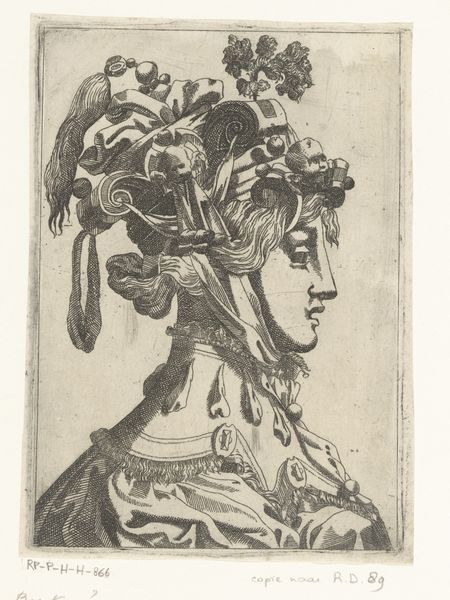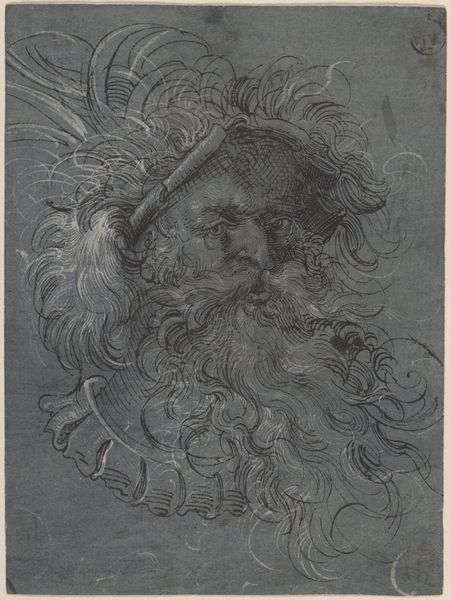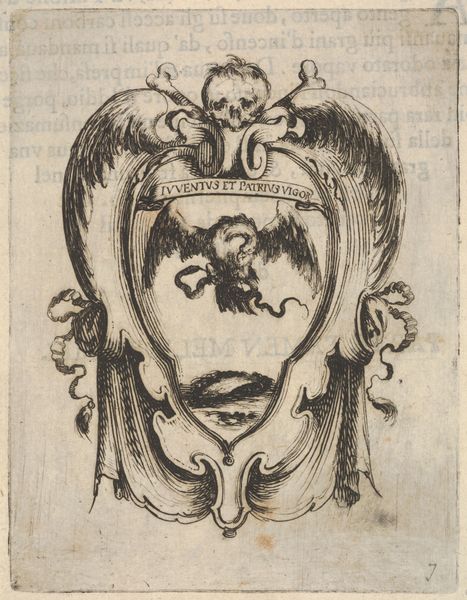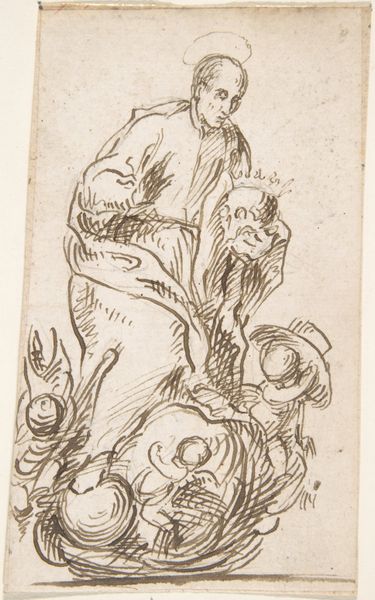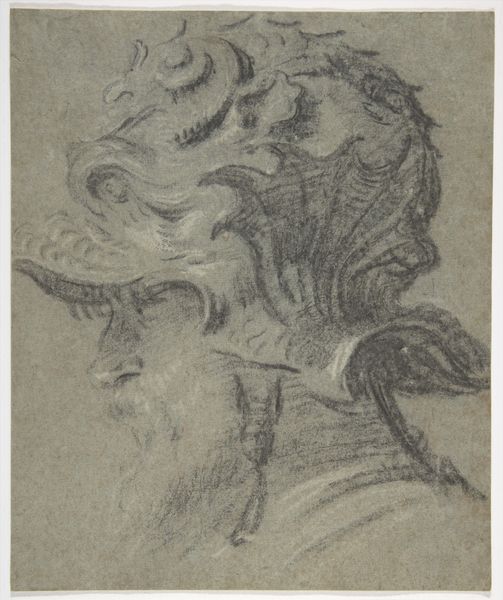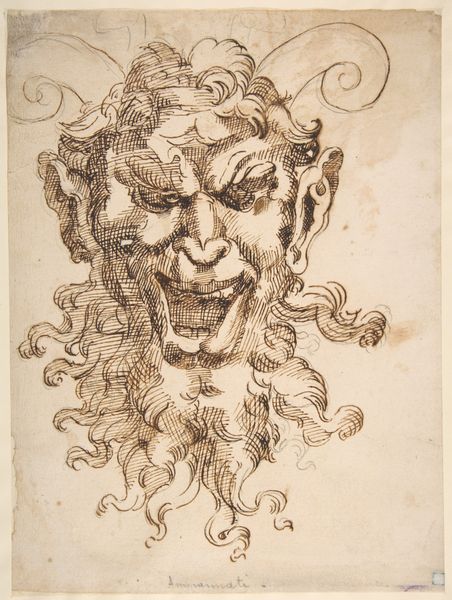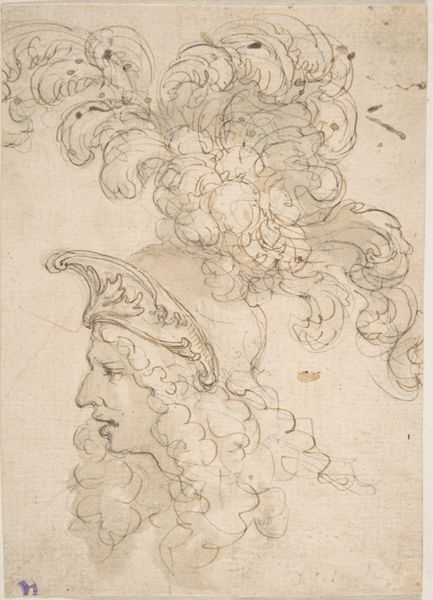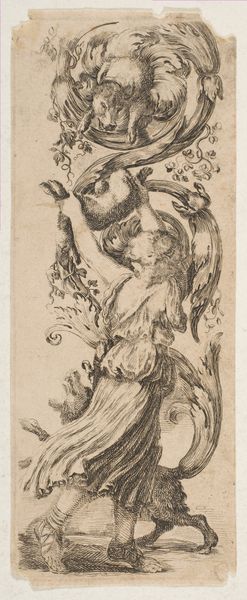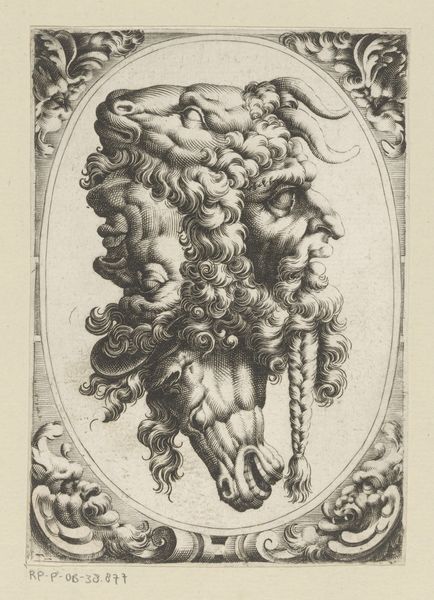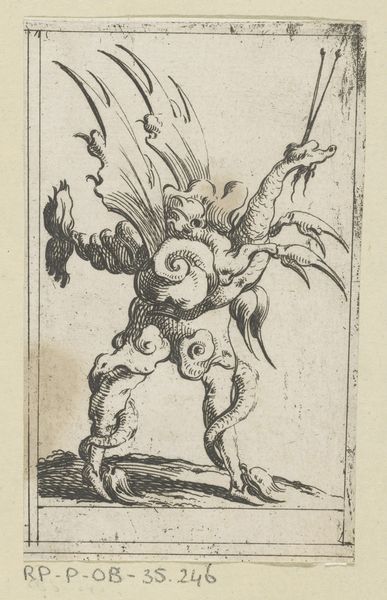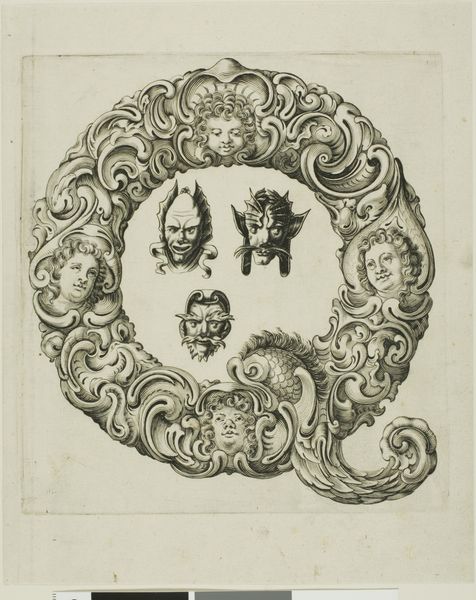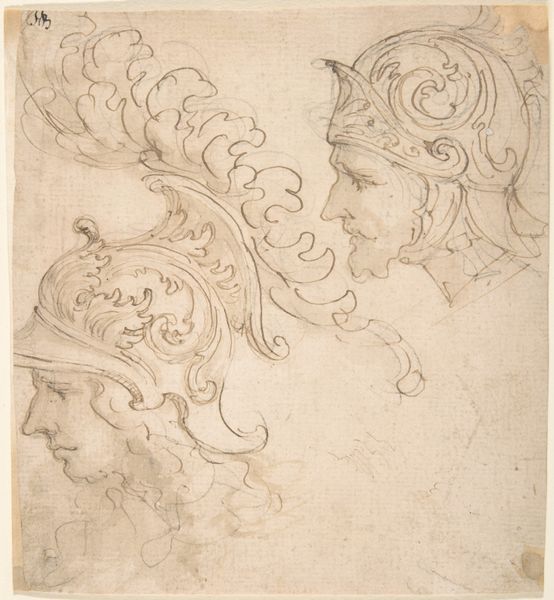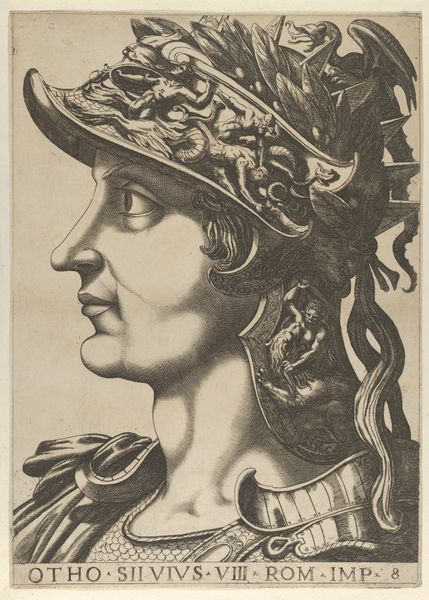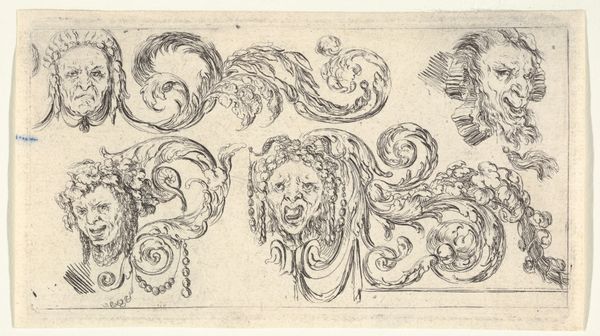
Design for Two Masks Shaped as Satyr and a Winged Medusa Head 1732 - 1802
0:00
0:00
Dimensions: 6 7/8 x 5 1/16 in. (17.4 x 12.8 cm)
Copyright: Public Domain
Editor: Here we have Carlo Bianconi’s “Design for Two Masks Shaped as Satyr and a Winged Medusa Head,” created sometime between 1732 and 1802. It's an ink drawing of two grotesque faces, a satyr above and Medusa below. There’s something unnerving about the raw emotion captured in those faces. What do you see in this piece? Curator: Well, beyond the immediate grotesque imagery, I see a reflection of societal anxieties regarding power and femininity during the Baroque era. The Medusa figure, often interpreted as a symbol of female rage and monstrosity, is particularly fascinating. How do you think her depiction here speaks to the historical context of gender roles and expectations? Editor: That's interesting! I hadn't considered the gender dynamics so explicitly. The winged aspect feels unusual, doesn't it amplify her power, rather than simply demonising her? Curator: Precisely. The winged Medusa transcends simple demonization. It raises questions about patriarchal fears of female agency. Note the juxtaposition with the Satyr. Is this about human vices being held up to a mythological standard? What if we view the Satyr, and its hyper-masculinity, as a counterpart to Medusa's misunderstood power? Editor: So, it’s like a visual commentary on the era's struggle to define and control both masculinity and femininity. Curator: Exactly! And we could consider how these images function as masks. Masks serve to both conceal and reveal. Editor: This artwork isn't just a historical artifact; it is an insight into power dynamics, societal anxieties and gender identity, all still so relevant today. Curator: Indeed. It’s a reminder that art can be a powerful tool for critiquing and understanding the complexities of human existence across time.
Comments
No comments
Be the first to comment and join the conversation on the ultimate creative platform.
